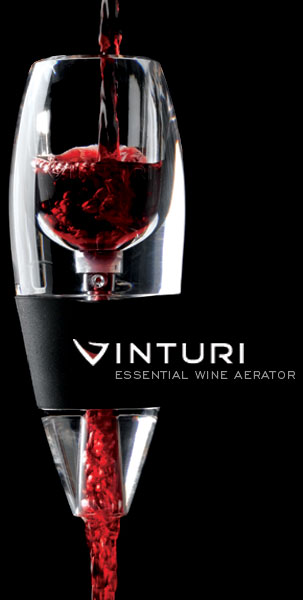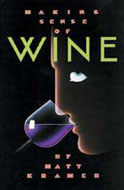"Unfortunately, the notion of connoisseurship is fraught with forbidding connotations, often of men with pointed goatees murmuring over glasses of wine about the intricacies of such and such a vintage compared to another. These folks exist – more in Hollywood than in real life – and they are often just as offensive in reality as in conception.
In truth, connoisseurship is less a matter of what you know, and much more a matter of approach. As soon as one departs from the I like it/I don’t like it platform, one has become something of a connoisseur. The simplest, and perhaps best, definition is that a connoisseur is one who can distinguish between what he or she likes, and what is good. The two are by no means always the same.” – Matt Kramer, Making Sense of Wine
And so with that notion in my head, I set out to find a varietal that I wouldn’t normally enjoy. Frantically dashing about the New World reds section of the liquor store (invariably, the section easiest to navigate) five minutes before closing, I grabbed a 2009 Bogle Old Vine Zinfandel ($10.99). Though my mom loves Zinfandels (Cline being one of her favorites), I’ve never been a big fan of their peppery, earthy, and often acidic finish. Kramer refers to them repeatedly in his book as “big,” “tough,” and “strong” and that is exactly how they come across. This wine was no exception. However, I did thoroughly enjoy it. Not only was the wine a beautiful, deep burgundy but it smelled peppery with hints of oak. The first sip was warm and fruit forward, followed quickly by a finish full of peppery and oaky notes (it was aged 12 months in American oak barrels). The finish was not only spicy, but long and complex with structured tannins reminiscent of a good Cabernet. The balance between the initial fruity notes and the more earthy notes of the finish rounded out the body, giving it fullness. Though I am not sure that I'm a Zinfandel convert, if you’re already a fan, this Bogle is a great buy. It's evident that this wine encapsulates the best elements of a Zinfandel: full-bodied, fruit forward with end notes of pepper and spices.
Spurred on by either my obnoxious wine ranting or the grueling nature of job searching, a few friends from the program came over with wine this evening to have a wine and take-out pizza night. With pizza as the inspiration, Drew brought a 2010 Pietraluna Negro Amaro* from Italy ($12.99). On opening this beautiful bottle of wine, I was skeptical. The wine smelled so fruity that I was tempted to refer to it as “jammy.” Though the wine had very fruity and sweet notes of blackberry and raspberry, it finished with a hint of pepper and silky tannins. The wine lacked some complexity and depth but the fruitiness and smooth mouth-feel made it perfect for a warm summer night spent with friends. I’d suggest you drink this wine just as I did – around a big table of friends, laughing and letting the day slip slowly away.
*I hadn’t heard of this grape before, so I looked it up and found that the Negro Amaro varietal is grown exclusively in Puglia, or the “heel” of Italy, and is known for its deep purple color and rustic taste. Often the wine can be very perfume-y (hence the sweet fruity smell) but is tempered by a more bitter aftertaste.












